Nowadays, cervical spondylosis has become significantly younger. The cause of this is said to be due to improved living conditions, significantly reduced mobility during work and rest as well as the fast food fever. They lead to metabolic imbalance and increase injury to the cervical discs even with mild exertion or impact.

Therefore, it is not surprising that there are a lot of requests on the Internet - cervical spondylosis: symptoms and treatment. We present a brief overview of these questions, since they are always of a personal nature and a spine specialist or neurologist can only answer them during an appointment.
Characteristics of the disease
When cervical osteoarthritis occurs, the intervertebral discs of the intervertebral space will be destroyed. Usually, they perform shock absorbing and protective functions.
Located between the vertebrae, they prevent the vertebrae from touching each other. When walking and exercising more actively, they can compress, making the spine more flexible. In addition, due to the ligamentous apparatus of the intervertebral disc, pathways are created for the nerves to exit the spinal cord.
When discs and ligaments are destroyed, the vertebrae begin to rub against each other. Friction causes pain and other discomfort in the neck. When the vertebrae approach each other, nerves are compressed and other symptoms appear in those parts of the body for which the affected nerve cells are responsible. Neurological symptoms occur.
Osteoarthritis can affect any part of the spine and symptoms will vary. Disc destruction can occur in multiple areas at once.
A greater amount of load falls on the lumbar spine, which means that the intervertebral discs and ligaments here are most often altered. But it is cervical spondylosis that causes the most suffering for people. After all, the main blood vessels that supply blood to the brain run through the neck, and there are many nerves and nerve endings.
Statistics show that the cervical region is most often affected. Of all the parts of the spine, it is the most mobile. On a video on the Internet you can see how the disease develops and its complications.
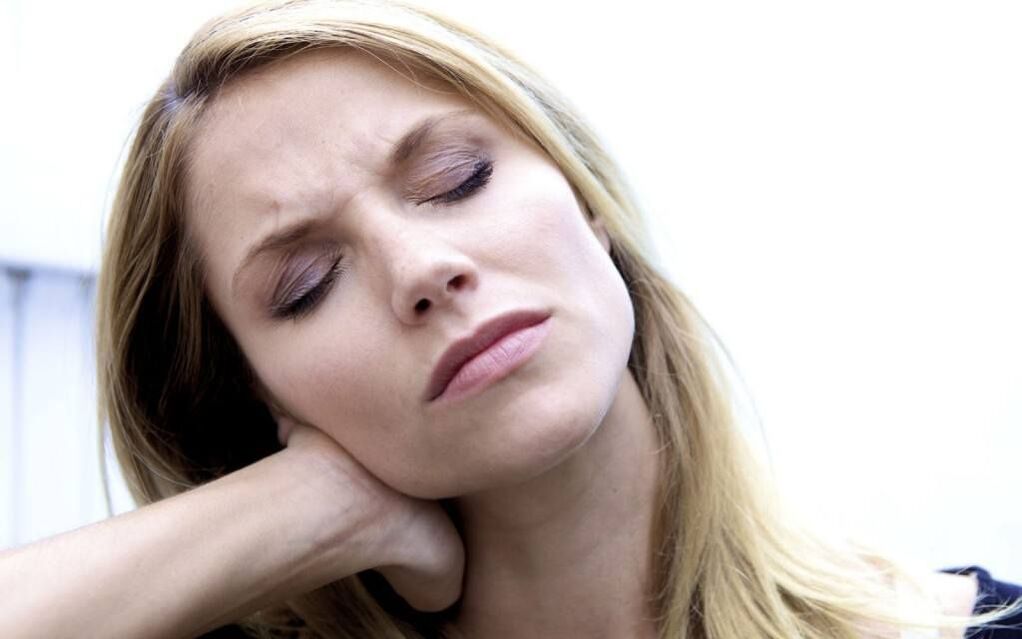
Symptoms of cervical spondylosis in women are basically no different from symptoms that occur in men. There is one difference: the most common symptom of the disease in women is headaches.
reason
Classic causes of the development of cervical spondylosis include:
- low mobility, lack of adequate physical activity;
- disruptions in metabolism;
- salt deposits, especially in the cervical area;
- unbalanced diet;
- Improper body posture when working in front of a computer, driving a car, or during other sedentary activities.
If you are predisposed to deformed joints or salt buildup, your risk of developing the disease due to an unhealthy lifestyle increases.
Classification of clinical manifestations
Cervical spondylosis, symptoms and pathological treatment are closely related, but complex therapy is prescribed only after clarifying the diagnosis using instruments. Currently, there is the following classification of manifestations.
Root syndrome or cervical radiculitis
Nerve root syndrome is the medical term for a group of symptoms that occur due to compression of nerve roots located between the cervical vertebrae. Initially, such compression manifests itself in the form of paresthesias - numbness, tingling sensations and a feeling of "goosebumps" on the skin.
Ignoring and not treating such symptoms will make the disease worse. Acute pain (fast or slow) occurs, developing into chronic pain syndrome.
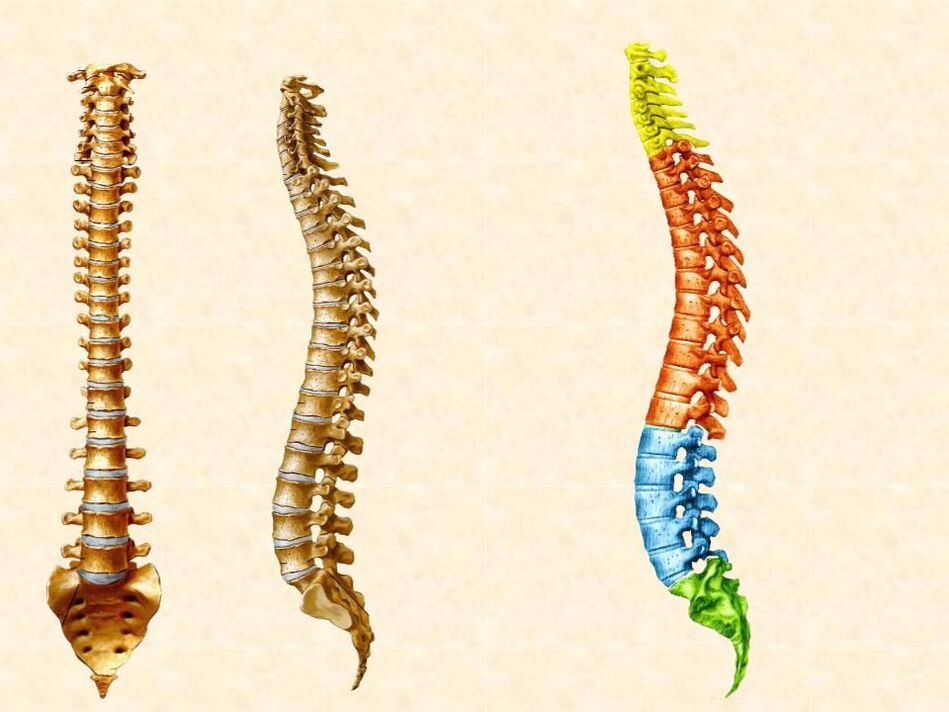
Characteristic manifestations of cervical radiculitis depend on the location of the degenerative processes, i. e. Between that vertebra the nerve root is compressed:
Reflex excitatory syndrome
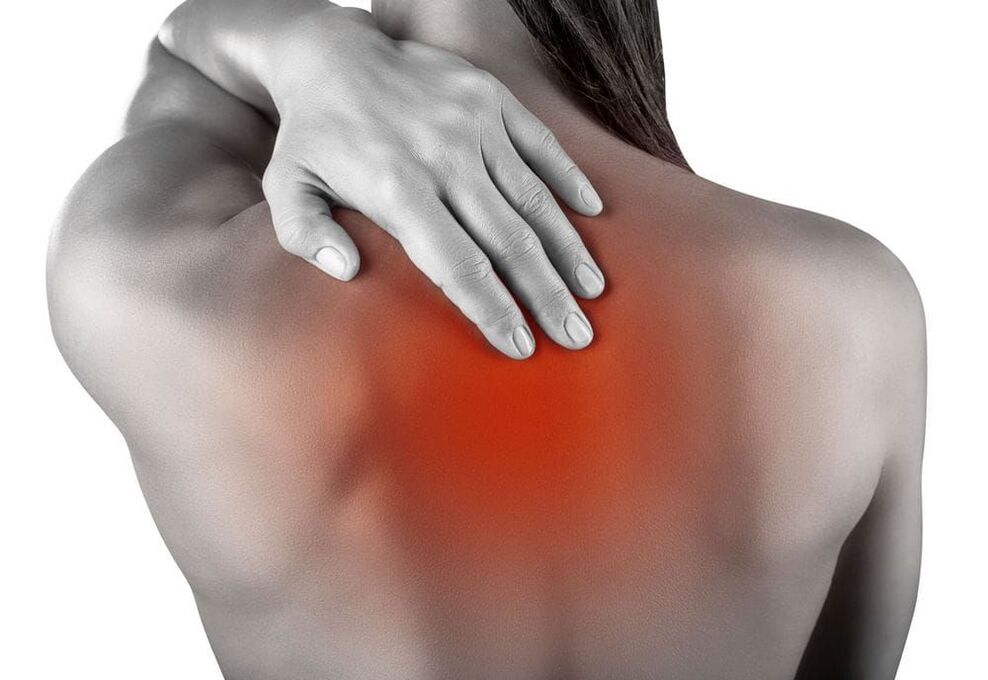
Pain in reflex excitation syndrome when compression of the lower cervical vertebrae occurs between the shoulder blades.
This syndrome is characterized by diffuse, burning pain in the neck, back of the head or upper back. They occur after sleep or during the onset of movement after a long period of remaining in the same position. The pain may spread to the heart or shoulder joint in a painful way.
Vertebral artery syndrome
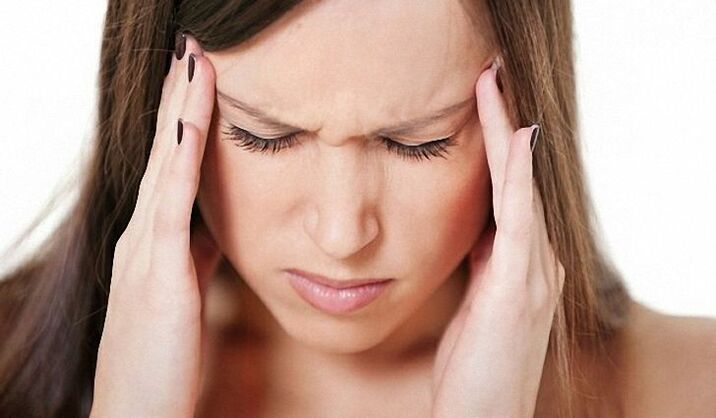
Cervical and thoracic spondylosis, symptoms (and their treatment) can present as signs that combine to form Vertebral Artery Syndrome:
- headache – point-like, pounding or burning, spreading;
- positioning sites - above the eyebrows, temples, top of the head, back of the head;
- the pain is constant, but sometimes occurs in the form of attacks;
- The severity of pain increases after the first movements from a static position;
- in weakened people, nausea may develop, coordination of movements may be impaired, dizziness and fainting may occur;
- Possible loss of hearing and vision, "rabbits" in the eyes, tinnitus, snoring.
On a note! Quite often, the only sign of cervical osteoarthritis is throat symptoms. These include: soreness, dryness and/or difficulty swallowing. However, the cost of ignoring such symptoms can be enormous. These symptoms are inherent in some inflammatory diseases that can develop into cancer.
Heart syndrome
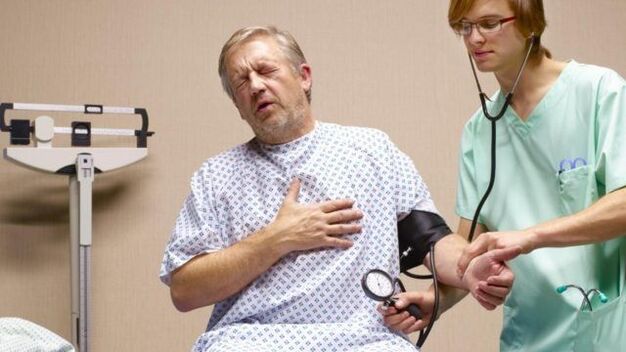
Preliminary diagnosis of cervical spondylosis is often complicated because the patient has cardiac syndrome.
It is characterized by:
- increased heart rate;
- pain or prolonged pain in the heart area, often mistaken for angina;
- Chest pain that gets worse after sudden movements or lifting heavy objects.
That is why, if angina is detected, an experienced doctor will send the patient for an X-ray of the cervical and thoracic vertebrae, because with the parallel diagnosis of cervical spondylosis, the symptoms and home treatment will be specific.
For example, the vertebrologist is obliged to warn the patient that if nitroglycerin or another coronary vasodilator does not relieve a "heart attack", they should not be taken repeatedly in short succession. Just taking ibuprofen or Nurofen forte is enough.
For your information! There is another way you can distinguish true angina from painful coronary syndrome. With the latter, the patient can walk quickly.
Minor symptoms
nausea
Nausea and belching are the result of blood circulation problems in the brain. Often patients associate this symptom with nutritional errors, begin to limit the amount of food eaten and change their diet.
Nausea and belching can reduce appetite. All these phenomena lead to the fact that a person begins to lose weight and the balance of nutrients in the body is disrupted.
The nausea can end with vomiting, which also happens when turning the head carelessly, bending the body or vigorous physical activity. In this case, poor circulation leads to insufficient nutrition in the inner ear and balance center.
Feeling of suffocation
The feeling of lack of air occurs when the phrenic nerve is compressed in the cervical region of the spine. This important nerve is part of the cervical plexus and regulates the depth of breathing and the frequency of breathing movements.
Patients complain of shortness of breath with all their might. Shallow breathing leads to reduced oxygen levels in the blood, difficulty breathing, and in severe cases, suffocation.
At night, breathing may stop, often occurring along with snoring. Nocturnal problems will occur if a person lies in an uncomfortable position and the head and neck are not in the correct anatomical position.
If these problems are accompanied by unsatisfactory hygiene of the room where a person sleeps, when the room is poorly ventilated, dusty and does not have a flow of clean air at night, the patient will suffer from lack of oxygen. Lack of oxygen occurs in all tissues of the body, when waking up the patient will not feel rested
Feeling of tinnitus
Tinnitus occurs due to problems with blood supply to the vestibular apparatus. Blood vessels pass through the cervical vertebrae of the spine.
Disturbances in parts of the inner ear cause the sensation of many different sounds:
- background noise;
- squeak, squeak.
A complex of such complaints is often called cochlear or cochlear syndrome.
Important: if the patient does not consult a doctor about these symptoms, over time hearing will decrease.
Patients often think that such disorders are related to the hearing analyzer itself. Even doctors may find it difficult to understand the situation, especially if there are no obvious signs of osteonecrosis.
However, when there are problems with the vertebrae, there will be specific hearing symptoms. Cervical spondylosis can be distinguished by the characteristics of its appearance, due to which sounds will arise when a person is in one position for a long time.
Throat problems
Typically, osteochondrosis can only be felt through a variety of throat symptoms:
- Sore throatoccurs without connection to food intake, you can monitor the difference between the appearance of symptoms and sudden movements of the head and neck.
- Feeling of a foreign object in the throatappear and disappear.
- There are complaints of itching and dry throat, a strong feeling of discomfort can stimulate the patient's desire to cough. The cough will cause an increasingly dry and itchy feeling. These complaints are the result of damage to both nerve fibers and blood vessels at the same time.
Important: such symptoms can be observed when there is inflammation in the cervical vertebrae area and when tumors appear.
Vision problems
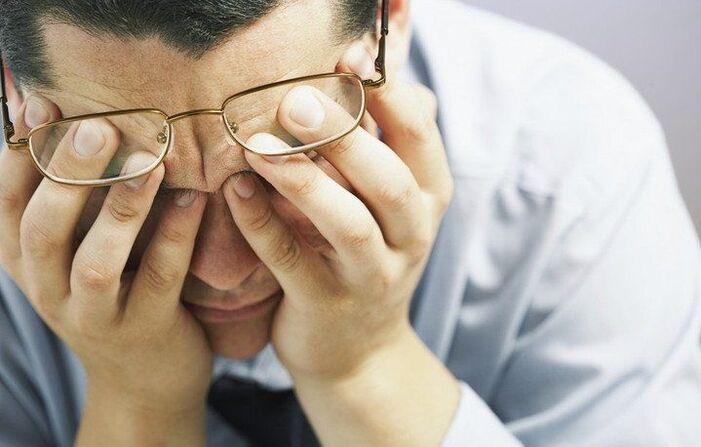
Impairment of visual function is less common; they often occur in people with atherosclerotic lesions at the ends of the vessels and a general decrease in pressure.
The vessels supplying the eyes also run through the cervical vertebrae. When there is osteoarthritis, there are the following complaints:
- the appearance of a "veil" in the eyes;
- decreased clarity and vision;
- appearance of black dots or rods;
- difficulty concentrating on a specific topic.
Symptoms are intermittent. Patients notice vision sometimes worsening and sometimes improving.
A distinctive symptom of osteonecrosis is the inability to influence the state of vision with the help of glasses, medications and gymnastics. Eliminating the symptoms is possible only after treating the root cause of the problem.
Loss of consciousness
Impaired blood supply to the brain can lead to loss of consciousness or fainting. This occurs when blood flow to the brain is temporarily interrupted.
In this case, clamping does not necessarily occur in the cervical region; Just stimulation by deformed structures of the vertebrae is enough. In response to this effect, a significant contraction occurs in the artery.
Consciousness returns to a person quite quickly. This is facilitated by changing body position. The unconscious person must be placed horizontally with both legs raised. In this way, blood from the lower part of the body will help restore blood supply to the affected part of the brain.
As a rule, such short-term conditions do not cause complications or consequences. If the interruption of blood flow to the brain is stronger, then consequences are possible.
Important: after losing consciousness, the patient must see a doctor to be examined and prevent recurrences.

Although this condition lasts only a short time, an unconscious person needs to call an ambulance.
Blood pressure problems
The presence of osteoarthritis in the cervical spine causes high blood pressure. For those past middle age and the elderly, this may be especially notable. This is because the center responsible for the reaction of blood vessels to changes in the external environment is located in the brain and is also deprived of blood supply.
The presence of irritating factors in the form of deformed vertebrae aggravates the situation. This is how the symptoms of VSD arise against the background of cervical spondylosis. Depending on a person's predisposition, hypertensive or hypotensive attacks will occur. Often one type of crisis gives way to another.

Temperature fluctuations
Temperature fluctuations are not a specific symptom of osteonecrosis. If the body temperature increases, it means that the body has developed a new infection or tumor. The immune system responds in the form of temperature.
However, the patient may feel a warming and even burning sensation in the problem area, i. e. along the back of the neck.
When several symptoms combine, a person begins to feel unwell. General health worsens, mood drops, irritability and inattention arise. For patients with severe pain or blurred vision, performing daily tasks and performing work activities effectively becomes difficult.
Important: if any complaints, even unrelated to spinal problems, prevent you from leading a normal lifestyle, then you should see a specialist as soon as possible and determine the cause. cause of concern.
Risks of diseases
Cervical osteonecrosis poses a great danger because the affected area is the most important blood vessel supplying the brain and spinal cord with many nerve branches. All symptoms of osteoarthritis have a significant negative impact on the patient's health and quality of life.
But this disease has life-threatening complications:
- Disc herniation is considered the next stage in the development of osteoarthritis. It occurs in the absence of treatment. People who have had neck or back pain for a long time without seeing a doctor receive just such a diagnosis.
- Compression of the processes of the spinal cord causes damage to them and radiculopathy develops. Along with that, growths and bone spurs form on the vertebrae. All this threatens the patient with loss of mobility and sensitivity of the areas for which the affected nerve fibers are responsible.
- One of the most dangerous complications is vertebral artery syndrome with cervical spondylosis. This artery supplies important parts of the brain - the medulla and cerebellum. When this vessel is compressed due to bone necrosis, ischemia occurs in the spinal cord and brain. There is a risk of this condition ending in stroke.
- If the disease is not treated for many years, when there is a deformity of the vertebrae, there is a possibility of damage to the spinal cord itself, located inside the spine. The price of lack of treatment is organ damage incompatible with life.

If a person discovers severe symptoms of cervical spondylosis, he should consult a specialist as soon as possible. Vertebral deformities can lead to serious injuries to the spinal cord and this is very dangerous for humans.
Treatment of cervical spondylosis
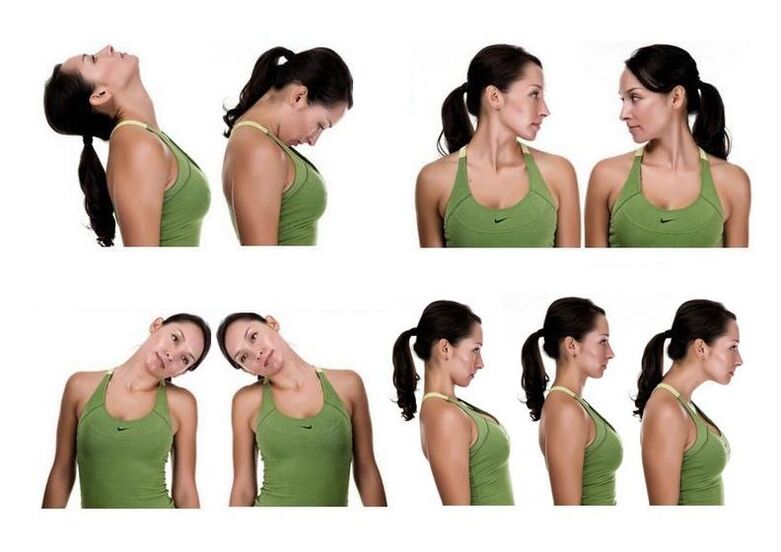
Symptoms of cervical spondylosis and home treatment require approval from a treating specialist. The video in this article with a set of exercises for the neck muscles was not posted. There are a lot of them on YouTube.
However, you should know that the guidelines for therapeutic exercise with this diagnosis prohibit:
- jogging;
- perform any dance moves;
- Strengthen your shoulder and neck muscles with dynamic exercises, especially with weights or resistance.
Important! If there is an exacerbation of cervical spondylosis, symptoms and treatment with physical exercises, self-massage procedures and physiotherapy will be suspended. During the acute period, visiting an orthopedist is also prohibited. Rest and treatment with pain relievers or nonsteroidal anti-inflammatory drugs and ointments are prescribed.
Treatment of cervical spondylosis with folk remedies is not very effective and can be used as an auxiliary therapeutic method at the rehabilitation stage. However, zoologists praise treatment with leeches and strongly discourage treatment with bay leaves;
Allergy is a dangerous disease, its occurrence cannot be predicted, and an acute allergic reaction - Quincke's edema can lead to anaphylactic shock and death.

Among non-traditional methods of treating cervical spondylosis, we can recommend:
- dynamic and static yoga classes;
- Wushu, Taiji and Qigong gymnastics;
- acupuncture and Su-Jok.
In addition to daily exercise, it is necessary to give up bad habits, monitor daily water intake and balance the diet, and do special exercises in the morning for regional osteoarthritis. belt. The weekly menu should include raw and cooked vegetables, fresh seasonal fruits, fermented milk drinks and daily dishes.
You should eat natural foods and fish from the herring or salmon family every day. Replace coffee and tea with rosehip decoction and natural fruit juices.
Treatment of cervical spondylosis is a long process, not months but years. Osteochondrosis cannot be cured, but significant relief can be achieved. The result will depend only on the patient himself, diligently following recommendations and maintaining a healthy and active lifestyle.
Frequently asked questions
What are the symptoms of cervical spondylosis?
Cervical spondylosis can manifest as pain in the neck, shoulders, arms, dizziness, tinnitus, numbness or tingling in the arms, and limited neck mobility.
How can you treat cervical spondylosis at home?
To reduce the symptoms of cervical spondylosis, you can use relaxation methods, neck muscle strengthening exercises, massage, warm compresses, and use pain-relieving ointments and gels.
What exercises help treat cervical spondylosis?
To strengthen the neck muscles and reduce symptoms of cervical spondylosis, stretching and strengthening exercises for the neck muscles, head rotation, neck flexion and rotation, as well as exercises to improve posture are all helpful. useful.
Helpful advice
Tip #1
For cervical spondylosis, special exercises should be performed to strengthen the neck and back muscles. This will help improve blood circulation and reduce stress on the spine.
Tip number 2
You can apply cold compresses or heat wraps to relieve pain and reduce inflammation. Cold helps reduce swelling, while heat improves blood circulation and relaxes muscles.
Tip number 3
It is important to monitor your posture and avoid being in incorrect positions for long periods of time. Taking regular breaks to stretch and adjust your working posture can reduce stress on the cervical spine.
























